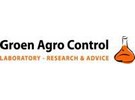Recently, the EU have published 5 changes to regulations regarding pesticide residues. These changes will become active in April and August of 2019 and include reductions and elevations of the Maximum Residue Levels (MRLs) for different products:
- Regulation EU 2019/88 is an amendment to Annex II to Regulation EU 396/2005, and describes a change in the maximum residue levels of acetamipirid in or on certain products. This regulation becomes active on August 13, 2019.
- Regulation EU 2019/89 is an amendment to Annexes II, III and V of Regulation EU 396/2005, describes a change in the maximum residue levels of bromadiolone, etofenprox, paclobutrazole and penconazole in or on certain products. This regulation becomes active on August 13, 2019.
- Regulation EU 2019/90 is an amendment to Annexes II, III and V of Regulation EU 396/2005 and describes a change in the maximum residue levels of bromuconazole, carboxin, fenbutatin oxide, fenpyrazamine and pyridaben in or on certain products. This regulation becomes active on August 13, 2019.
- Regulation EU 2019/91 is an amendment to Annexes II, III and V of Regulation EU 396/2005, and describes a change in the maximum residue levels of buprofezin, diflubenzuron, ethoxysulfuron, ioxynil, molinate, picoxystrobin and tepraloxydim in or on certain products. This regulation becomes active on August 13, 2019.
- Regulation EU 2019/552 is an amendment to Annexes II and III of Regulation EU 396/2005, and describes a change in the maximum residue levels for azoxystrobin, bicyclopyrone, chlormequat, cyprodinil, diphenoconazole, fenpropimorph, fenpyroximate, fluopyram, fosetyl, isothiolone, isopyrazam, oxamyl, prothioconazole, spinetoram, trifloxystrobin, and triflumezopyrim in or on certain products. This regulation is already active since April 25, 2019.
For more information: Groen Agro Control
Groen Agro Control
www.agrocontrol.nl
